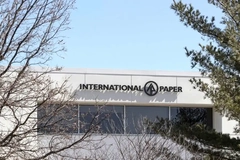Packaging versus food waste: Sealpac and GPI back material innovations in climate change fight

29 Aug 2022 --- Food waste remains one of the most environmentally damaging phenomena on earth. Despite the continued concern over plastic’s ecological impact, the material plays a vital role in extending food shelf life and preventing rising greenhouse gas (GHG) emissions.
Packaging is essential to ensuring that food products reach consumers and don’t end up needlessly wasted, resulting in increased GHG emissions associated with production, transportation and rotting produce.
If food waste were a country, it would be the world’s third-biggest greenhouse gas emitter behind China and the US, according to the UN Food and Agriculture Organization.
With so much legislative focus now directed at packaging’s footprint, producers are increasingly faced with the challenge of producing shelf life-extending packaging while reducing environmentally harmful materials. At the same time, debates about where producers’ responsibility lies and where national infrastructure and legislation should play a role are ongoing.
PackagingInsights speaks with experts from Sealpac and Graphic Packaging International (GPI) to discuss these issues and uncover the latest industry trends.
An example of Sealpac MAP packaging.The limits of producer responsibility
Dr. Elodie Bugnicourt, sustainability manager EMEA at GPI, says that while packaging is a key element in fighting food waste, the fact that packaging itself has far less environmental impact than the products within it must be remembered.
“The Farm to Fork initiative as part of the European Green Deal focuses on reducing food waste, which can be very high in some product categories. Large amounts of food waste place a heavy burden on the food industry in terms of unnecessary resource consumption and climate impact,” she says.
“Overcoming this challenge has to involve holistic, 360-degree thinking. As packaging’s main function is to preserve and protect packed goods, it is a key part of this equation.”
“Product waste has much more environmental impact than packaging in most cases. Therefore, the responsibility of the packaging industry is to propose fit-for-purpose solutions that will maintain the shelf life of food products while still being as sustainable as possible.”
To achieve this, Bugnicourt says industry should work with end users on a case-by-case basis, analyzing the whole life cycle of any product category and understanding where waste occurs.
“In these cases, optimizing the primary, secondary, or transport packaging, and in some cases, the logistics and storage conditions through the supply chain, can be a step in the right direction.”
Portion sizes and plastic  This reclosable film for sliced cheese is an example of how dairy can be kept longer.Meanwhile, Marcel Veenstra, marketing and communications manager at Sealpac, highlights that despite packaging usually only accounting for around 10% of a product’s total footprint, producers must be careful to achieve reductions in material usage where possible. Sealpac’s motto is “as little plastic as possible, as much as necessary.”
This reclosable film for sliced cheese is an example of how dairy can be kept longer.Meanwhile, Marcel Veenstra, marketing and communications manager at Sealpac, highlights that despite packaging usually only accounting for around 10% of a product’s total footprint, producers must be careful to achieve reductions in material usage where possible. Sealpac’s motto is “as little plastic as possible, as much as necessary.”
Veenstra says that of food life-preserving technologies prevalent today, the best known is Modified Atmosphere Packaging (MAP), which is crucial to prolonging the shelf life of many fresh food products.
“For some products, like fresh red meat, it [MAP] maintains the color at retail, making it more appetizing for consumers to buy for a longer time. In general, the challenge will be to maintain the MAP capabilities of packaging in light of the demand for more sustainability, which has resulted in the growth of paper-based packaging systems,” he says.
“Paper is more permeable than plastic, so it has fewer barrier properties for MAP. Another important factor is portion size. Consumers throw away food for many different reasons, but an important one is a mismatch between the amount of food inside the pack and the actual need of the consumer.”
Especially with the number of single-person households and smaller families growing across the globe, this issue has become ever more evident, Veenstra notes.
 Methane produced by rotting food is one of the most prevalant GHG emissions on earth.“Sealpac offers numerous solutions for packaging fresh food items in smaller portions. Each portion is reliably sealed and therefore available on demand, hence resulting in less waste of food. The use of reclosable packaging also helps in fighting food waste.”
Methane produced by rotting food is one of the most prevalant GHG emissions on earth.“Sealpac offers numerous solutions for packaging fresh food items in smaller portions. Each portion is reliably sealed and therefore available on demand, hence resulting in less waste of food. The use of reclosable packaging also helps in fighting food waste.”
Avoiding waste and adapting law
Besides altering portion sizes and creating increasingly effective shelf life-extending technologies, finding methods of avoiding waste altogether is the most important task food, packaging producers, and governments can pursue. However, Bugnicourt asserts that finding solutions where waste cannot be avoided is also significant.
“As the food industry reinvents its approach to managing the different types of waste it generates, a lot can be put back into the value chain. Some materials, such as biopolymers, fibers, or active ingredients, can potentially be used in food packaging. There is a lot of interesting research showing great opportunities if we can overcome the remaining challenges to upscale this kind of technology,” she explains.
“Another point on food waste in relation to packaging could be to enable the circularity of certain non-consumed products like tea or coffee enclosed in end-of-life packaging. In that respect, the transition to compostable packaging has arisen as a regulatory requirement in some countries like France.”
“This helps circulate the food back into the economy as biomass to support new biological cycles and reduces the amount of linear waste that would otherwise be incinerated or sent to landfill in most cases.”
However waste reductions are achieved, Veenstra says that ultimately governments must develop systems that reward producers for reducing food waste or punish those that fail to do so. Either way, he concedes, this will take time.
By Louis Gore-Langton











